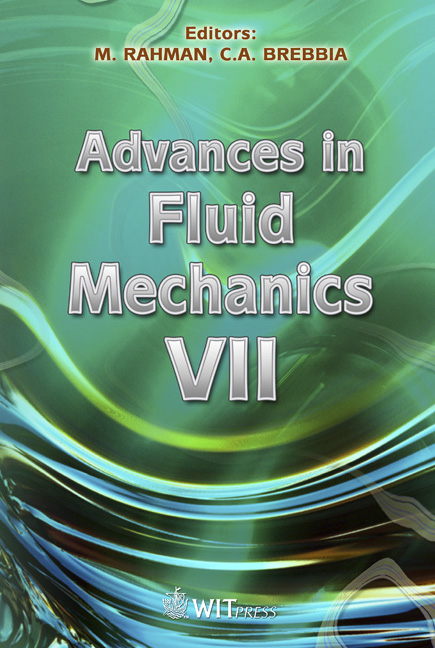An Active Controlling Technique For A Flow Around A Circular Cylinder
Price
Free (open access)
Transaction
Volume
59
Pages
10
Page Range
351 - 360
Published
2008
Size
644 kb
Paper DOI
10.2495/AFM080341
Copyright
WIT Press
Author(s)
H. Oualli, S. Hanchi & A. Bouabdallah
Abstract
An active controlling technique for a flow around a circular cylinder H. Oualli1, S. Hanchi1 & A. Bouabdallah2 1MDF, EMP, Bordj El Bahri, Algiers, Algeria 2LTSE, Université des Sciences et de la Technologie (USTHB), Algiers, Algeria Abstract In this study we describe the near wake response and flow dynamics associated with experimentally simulated flows around a circular cylinder that is either stationary, superimposed to simple harmonic cross-section variation, or harmonic cross-section variation combined to steady rotation. Results are examined for a Reynolds number Re = 1000 and a fixed vibrating amplitude equal to 5% of the cylinder radius. A large domain of the forcing Strouhal number up to several times the natural shedding frequency of the cylinder in rest is considered. Keywords: fluid-structure interaction, deforming-rotating cylinder, wake control, drag reduction. 1 Introduction Bluff body wakes play an important role in the design of a diversity of engineering structures and industrial applications: aerodynamics, heat exchangers, offshore structures. Control of vortex shedding leads to decreasing the unsteady forces acting on the body and can substantially reduce its vibrations. Flow control may be executed by controlling the boundary layer separation, the shear layers structures and / or the coherent structures dynamics in the body near wake. Several techniques, such as blowing, suction, surface roughness elements, etc., have already been considered by researchers [1], [2] and [3] presented a fairly comprehensive overview of the various methods for suppressing vortex shedding.
Keywords
fluid-structure interaction, deforming-rotating cylinder, wake control, drag reduction.





